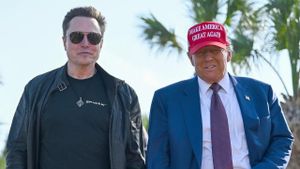Honda is making waves with its remarkable investment of over $1 billion aimed at reshaping its manufacturing capabilities at the new Honda EV Hub located in Ohio. This initiative is pivotal for the automotive giant, allowing it to produce internal combustion engine (ICE), hybrid, and electric vehicles (EVs) on the same production lines—a versatility not commonly seen among automakers.
The transformation of Honda's facilities, including the Marysville Auto Plant (MAP), East Liberty Auto Plant (ELP), and Anna Engine Plant (AEP), signifies more than just financial commitment; it's reframing how Honda approaches vehicle production altogether. The first EV off the assembly line will be the all-new Acura RSX SUV, expected to begin production by late 2025. Soon after, models based on the Honda 0 Saloon and Honda 0 SUV prototypes revealed at CES 2025 will follow.
Bob Schwyn, senior vice president of Honda Development & Manufacturing of America, expressed the company's vision, stating, "The Honda EV Hub provides Honda with the flexibility to produce ICE, hybrid-electric and EV models on the same production lines so we can quickly respond to shifting customer needs and market conditions." This flexibility is particularly advantageous as the market for electric vehicles continues to evolve.
Since announcing the establishment of the Honda EV Hub back in October 2022, Honda has reinforced its environmental commitments as part of its goal to make zero-emission vehicles represent 100% of its sales by 2040. This ambitious plan includes not only the retooling of existing plants but also the development of the L-H Battery Company, established through a joint venture with LG Energy Solution, which alone amounts to a projected $4.4 billion investment. The battery plant is set to begin operations alongside EV production, signaling Honda’s seriousness about its electrification strategy.
Two main themes define the transformation at the Honda EV Hub: flexibility and sustainability. The production processes are being thoroughly updated to implement advanced manufacturing techniques. For example, high-pressure die-casting machines are now part of the arsenal at AEP, revolutionizing the way battery cases are produced—reducing waste and ensuring high quality. Friction stir welding will contribute to building lightweight and strong components, emphasizing Honda's commitment to efficient manufacturing.
Underpinning these advancements is Honda’s 'Triple Action to Zero' sustainability initiative, which aims at achieving zero environmental impact by 2050. The comprehensive strategy encompasses three pillars: carbon neutrality, clean energy, and resource circulation. Specific measures have played pivotal roles across all the plants involved, including the installation of energy-efficient systems, the use of renewable energy sources, and extensive recycling efforts.
For the Japanese automaker, this undertaking signifies a significant shift. Honda has built cars at its Ohio plants for over 40 years, starting with the Marysville facility which erupted onto the automotive scene back in 1982. Over the decades, Honda has established itself as the first Japanese brand to build cars domestically, with over 12,000 associates currently employed to support its manufacturing efforts. The transformation project serves to modernize these existing plants rather than starting from scratch as many competitors have chosen to do.
The flexibility of production at the newly designated hub is noteworthy. Honda's engineering team has creatively reconfigured existing machinery to accommodate the unique challenges associated with both traditional and electric vehicles. For example, adjustments have been made to support the installation of electric vehicle components, demonstrating Honda's intent to meet growing consumer demand efficiently.
The EV Hub's investments and upgrades align with wider industry trends. Many automakers are now focusing on hybrid models as they balance conventional ICE vehicles with the transition to full electrification. While Honda plans on introducing innovative models, concerns remain about the pricing of their EV lineup, with expectations of high pricing due to the cost-intensive nature of EV production.
Despite these challenges, Honda's representatives remain optimistic, emphasizing their long-term investment and commitment to achieving carbon neutrality. Jessica Fini, Honda’s PR representative, stated, “We’ve invested billions in Ohio. We have a huge $4.4 billion joint venture just to make batteries. Do you really think we aren’t committed?”
To stay competitive, Honda may focus on balancing its production capabilities to adapt to market needs, ensuring their products meet demand consistently. It appears their strategy is to ramp up hybrid capabilities first followed by more affordable electric vehicles over time.
With the first models out of the Honda EV Hub expected to hit the roads by 2026, Honda is positioning itself not just as another player, but as a leader aiming to set the standard for flexible vehicle production. The ambitious plans will surely impact not just Honda’s future but also the electric vehicle market as a whole;
the roadmap to innovation reflects the automaker's desire to remain relevant and responsive to consumer demands as they evolve.



